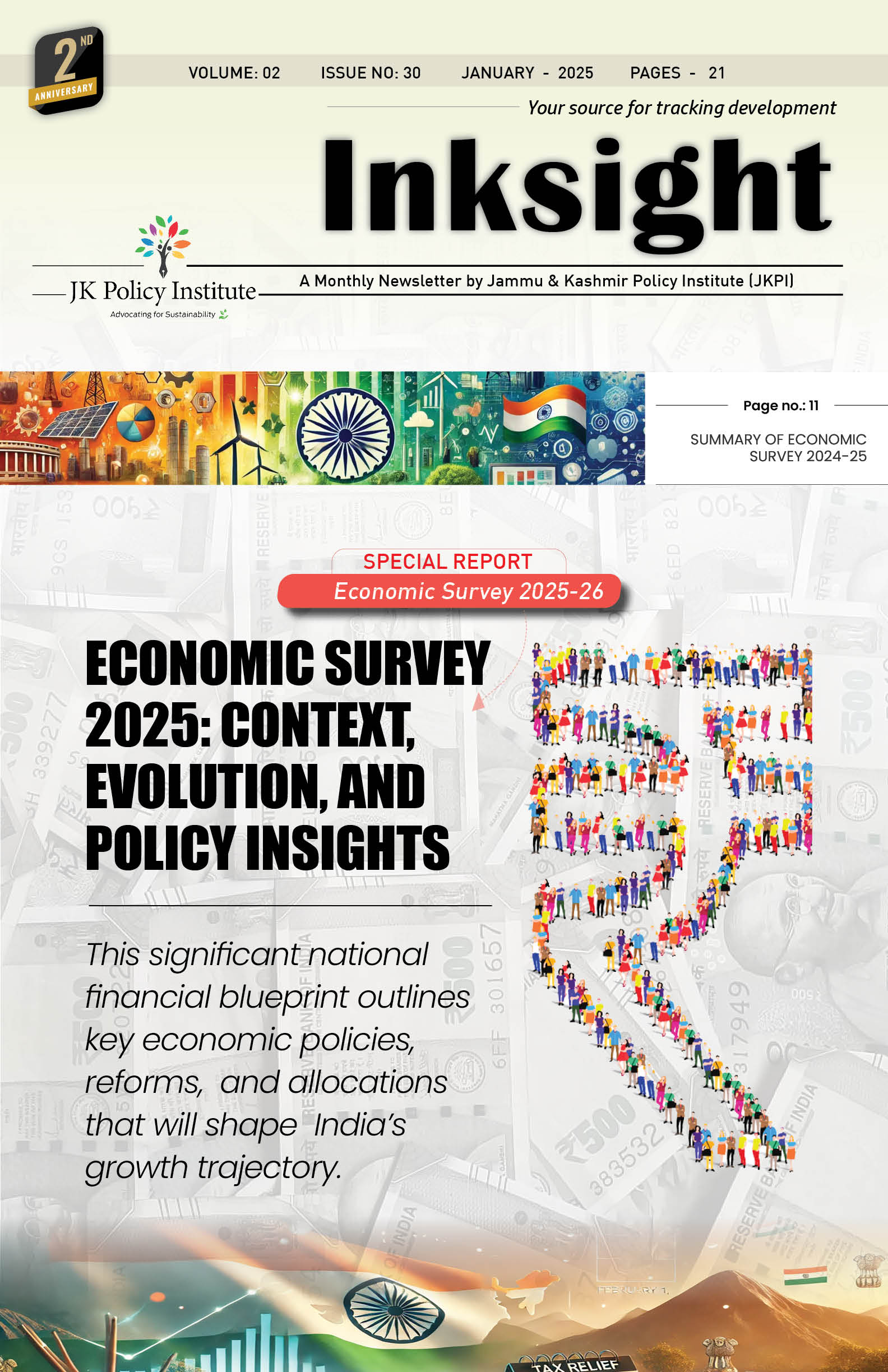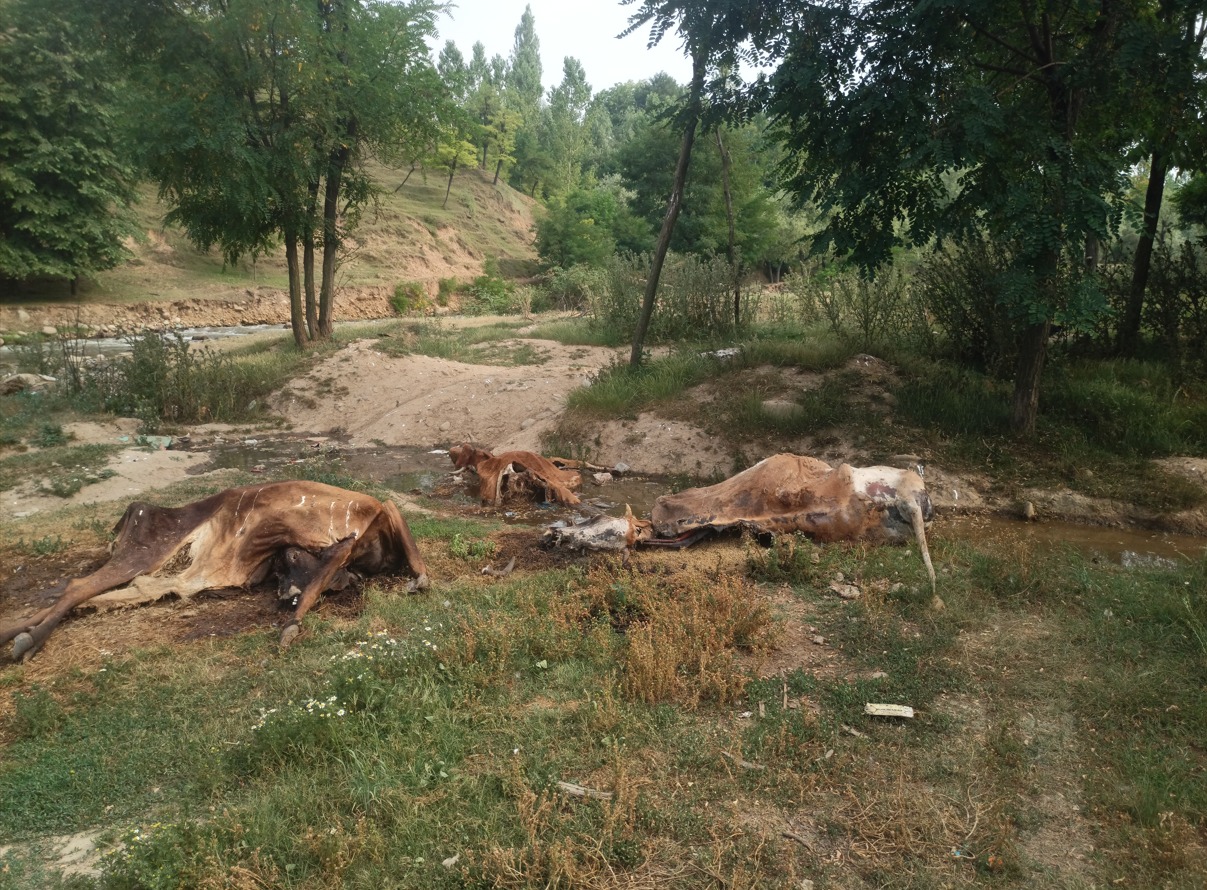Introduction
India accounts for 15% of the global animal population and has the highest number of cattle worldwide. The Basic Animal Husbandry Statistics report for 2021 states that there are 536.76 million livestock in India. Livestock accounts for around 6.20% of the country’s overall GDP and 31.0% of the GDP from agriculture (BAHS, 2021). In India, two-thirds of rural households depend on livestock for their livelihood (Economic Survey 2020–21). Similarly, one of the most significant economic sectors in Jammu and Kashmir is the livestock industry.
According to the 20th Livestock Census, Jammu and Kashmir (J&K) and Ladakh have 8.32 million animals. Sheep, cattle, goats, and buffalo make up 36.84%, 30.41%, 21.93%, and 8.03% of the total populations of J&K and Ladakh, respectively. Consequently, a substantial number of carcasses are produced in villages and cities. However, Jammu and Kashmir has been using the most inappropriate methods to dispose of dead animals. The most widely used mass animal carcass disposal method is burial, but in J&K, dead animal carcasses are often thrown into nearby streams, contaminating the water, posing grave threats to human health, and polluting the nearby environment.
The crises of dead animal carcasses in Kashmir
Jammu and Kashmir is facing escalating environmental and public health crises due to the improper disposal of waste. The JKPI has extensively highlighted this issue and brought it to the attention of policymakers. This report highlights the unscientific disposal of dead animals in open spaces and how it poses severe threats to the ecosystem, public health, and aesthetic beauty.
In 2021, under the Mahatma Gandhi National Rural Employment Guarantee Act (MGNREGA), the Watrahail block of Budgam district, with a budget of around 1 lakh, established a playground for the residents of Ramhuma and nearby villages to provide a recreational space for children. However, what was envisioned as a vibrant space for recreational activities has devolved into a dumping ground for dead animals. Notably, the famous distributary, Ahij of Sukhnag River, runs alongside this ground. The dead bodies of cows lying along this river pose a serious threat to both human health and the environment. The decomposing carcasses are contaminating the water supply, spreading harmful bacteria and diseases. During rains, animal carcasses are washed away by the gushing force of water, disrupting aquatic life and biodiversity and endangering the local communities who rely on the river for drinking water, bathing, and irrigation.
Notably, this area has the Budgam-Doodhpathri road running along one side, with irrigation offices and water filtering facilities nearby. Despite this, little has been done to remove these carcasses. The silence at the public and administrative levels indicates backwardness and carelessness. This neglect could have devastating consequences. Similarly, the presence of dead carcasses on the banks of the road leading to Hanief-u-Din Gazi’s shrine in Rathson village of Budgam poses a significant health risk to the devotees, visitors, and nearby villages. The decomposition of these carcasses releases unpleasant odours and potentially hazardous pathogens into the environment, spoiling the aesthetic perspective and spiritual atmosphere that shrines are meant to provide. The sight and smell of carcasses are disturbing for travellers, nearby villagers, and devotees.
Ironically, such situations have been normalized in Kashmir. Similarly, on the banks of the Sukhnag River near Zanigam village of Budgam, dozens of dead animal carcasses can be seen. Such scenes near water bodies are common in rural areas due to the lack of a carcass management system in Kashmir.
Unfortunately, neither private nor government organizations, including Panchayats and Municipalities, are involved in disposing of dead animals. Government and civil organizations have somehow overlooked and paid little attention to this issue. Additionally, farmers lack awareness regarding the consequences of improper disposal of animal carcasses.
Research published in the Journal of Pharmacognosy and Phytochemistry, titled “Awareness of Kashmiri Livestock Owners with Respect to Public Health Issues, Zoonosis, and Environmental Hygiene in Flood-Affected Areas of Kashmir Division (J&K, India),” assesses the awareness of livestock owners about the spread of diseases through improper disposal of animal carcasses. The findings revealed that a significant number of respondents (89.17%) believed they had no knowledge about how dead animals could contaminate public health sanitation. Additionally, 41.67% of owners perceived their environmental hygiene practices to be of poor quality. These findings highlight a clear lack of awareness and knowledge among respondents concerning public health, zoonotic diseases, and environmental hygiene. This suggests that there have been insufficient awareness campaigns and educational efforts in these areas by relevant authorities.
As there is no system in place to properly dispose of dead animals in Kashmir, people throw away carcasses wherever it is convenient for them. Some throw them into rivers, while others discard them in public places. This practice increases the risk of spreading zoonotic diseases like Anthrax, Tuberculosis, Brucellosis, and Salmonella. Besides, these dead animals spoil the aesthetics of our water bodies and beautiful pastures. Further, carcasses emit strong and unpleasant odours, causing a nuisance to nearby residents and passersby.
Policy Recommendation
The Mortality Composting Process
Composting Overview: Composting is a natural process where bacteria, fungi, and microorganisms break down organic materials into compost. In mortality composting, this process involves decomposing animal carcasses using microorganisms. Your role is to create the right environment for these microorganisms to work efficiently.
Process:
Setup: Place the animal carcass in a composting bin and surround it with a bulking agent (e.g., sawdust or straw) rich in carbon.
Decomposition: Inside the carcass, anaerobic microorganisms decompose the material, producing fluids and gases like hydrogen sulfide and ammonia. These gases diffuse into the bulking agent.
Aerobic Breakdown: Aerobic microorganisms in the bulking agent then convert these gases into odourless carbon dioxide (CO2) and water (H2O). This aerobic process generates heat, raising the compost pile’s temperature.
Heat Effect: The high temperature helps eliminate viruses and bacteria, while the bulking agent controls odors. The compost pile is left undisturbed until it cools down and aerobic activity slows. At this stage, most of the flesh and small bones decompose.
Turning the Pile: The pile is then turned to introduce more air, increasing aerobic activity and raising the temperature again. Once the temperature drops, the composting process is nearly complete, with most flesh, hide, and small bones decomposed.
On-Farm Process:
Three Bins:
Primary Bin 1: For initial carcass and bulking agent addition.
Primary Bin 2: For composting in the first heat cycle.
Secondary Bin: For the second heat cycle.
Cycle:
Add carcasses and bulking agent to the first bin until full.
Once full, start a new pile in the second bin and transfer the first bin’s pile to the third bin for the second heat cycle.
When the second bin is full, it is left to compost, and a new pile is started in the now-empty first bin.
After completing the second heat cycle, the first bin’s compost is removed and either stored or spread on fields.
Duration: The entire composting process typically takes 7 to 24 weeks, depending on factors like bulking agent type, temperature, moisture, management, and animal size.
Material Changes: Finished compost becomes dark brown to black, with reduced particle size and a soil-like texture. The volume and weight decrease as carbon dioxide and water evaporate, and raw materials turn into crumbly, fine-textured compost.
Benefits:
Biosecurity: Provides year-round carcass disposal without disease spread, prevents disease entry from off-farm vehicles, and kills pathogens through high temperatures.
Environmental Impact: Minimizes odour, protects groundwater, and recycles nutrients into beneficial fertilizer and soil amendment.
Cost-Effectiveness: Low to moderate startup and minimal operating costs.
Ease of Use: Requires effective management and minimal training.
Conclusion
The disposal of dead animals is a significant issue, as around 70% of the population is associated with livestock, and death is a natural phenomenon. Therefore, it is paramount to create a sense of responsibility and awareness among farmers, local governing bodies like Panchayats and Municipalities, and other government and civil agencies about the negative repercussions of improper disposal of dead animals. Awareness programs, similar to those for plastic waste, should be initiated to educate the masses, Panchayats, municipalities, and civil bodies so that this serious issue does not go unnoticed. Eventually, it will enter the public sphere, prompting government agencies to initiate policies related to carcass management.
The government should prioritize clearing carcasses from environmentally sensitive areas like Karshan Ramhuma and similar places to prevent health hazards. Subsequently, the government should enact strict regulations prohibiting the disposal of dead animals near public areas, roads, and water bodies. Violators of these regulations should face legal consequences. Panchayats should take responsibility for enforcement.
In developing countries like India, traditional disposal methods for dead carcasses, such as burial, burning, incineration, composting, and rendering, are still followed. However, in some areas, people simply throw dead animals into open fields. While all these methods have their drawbacks, they are not as harmful as open disposal. Thus, it is essential to encourage farmers, municipalities, and Panchayats to adopt any feasible traditional method. Burial is often an effective method of carcass disposal if pits are constructed, located, and managed correctly.
The government should strictly instruct Panchayats to take care of dead animals. The responsibility of disposing of these carcasses lies with Gram Panchayats and Municipalities. Panchayats can allocate MNREGA funds for the burial of dead animals. The general rule is that carcasses should be buried in an eight-foot-deep pit. Panchayats can also generate revenue and promote sustainable agriculture with little effort.
Dr. S.K. Dhaka, a senior scientist at the Agricultural Science Centre, explains to Goan Connection that organic compost created from animal remains, such as cow dung combined with decomposed carcasses, contains extremely nutritious organic material that is vital for soil. This compost is high in essential nutrients such as nitrogen, phosphorus, boron, manganese, and others that benefit crop growth. It acts as a comprehensive organic supplement for farming, potentially lowering the need for additional compost or synthetic fertilizers and supporting sustainable agricultural methods. Thus, through this process, the environment can be protected, and the need for fertilizers can be reduced.
Livestock plays an important role in our economy. However, it is shameful for both the owners and the authorities to let these creatures rot in open fields, particularly after they have been a source of income and sustainability. It is disturbing that these carcasses, with their foul odour, create a public nuisance, and nothing substantial has been done to address this sensitive issue. This is not only a matter of health and environmental concern but also a classic case of human apathy.
Furthermore, it highlights a loophole in the Swachh Bharat Mission that, despite substantial funding, nothing has been initiated for the proper management of dead animals. Hundreds of animals die every day in J&K, and it is paramount to provide them with proper burial or management to put an end to the rampant process of dumping them in open fields.
References
https://www.phytojournal.com/archives/2020/vol9issue4S/PartK/S-9-4-76-798.pdf
https://datcp.wi.gov/Documents/minnesotacompostguide.pdf



Leave a Reply
You must belogged in to post a comment.